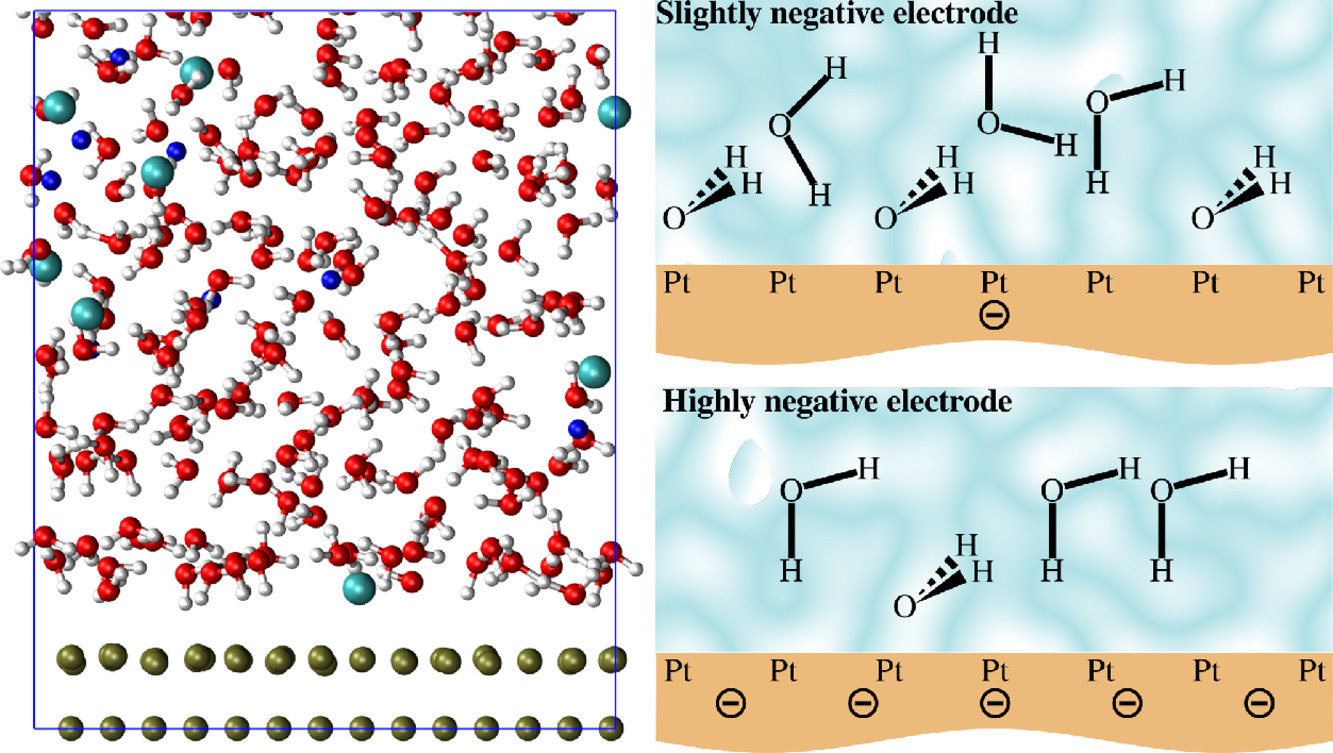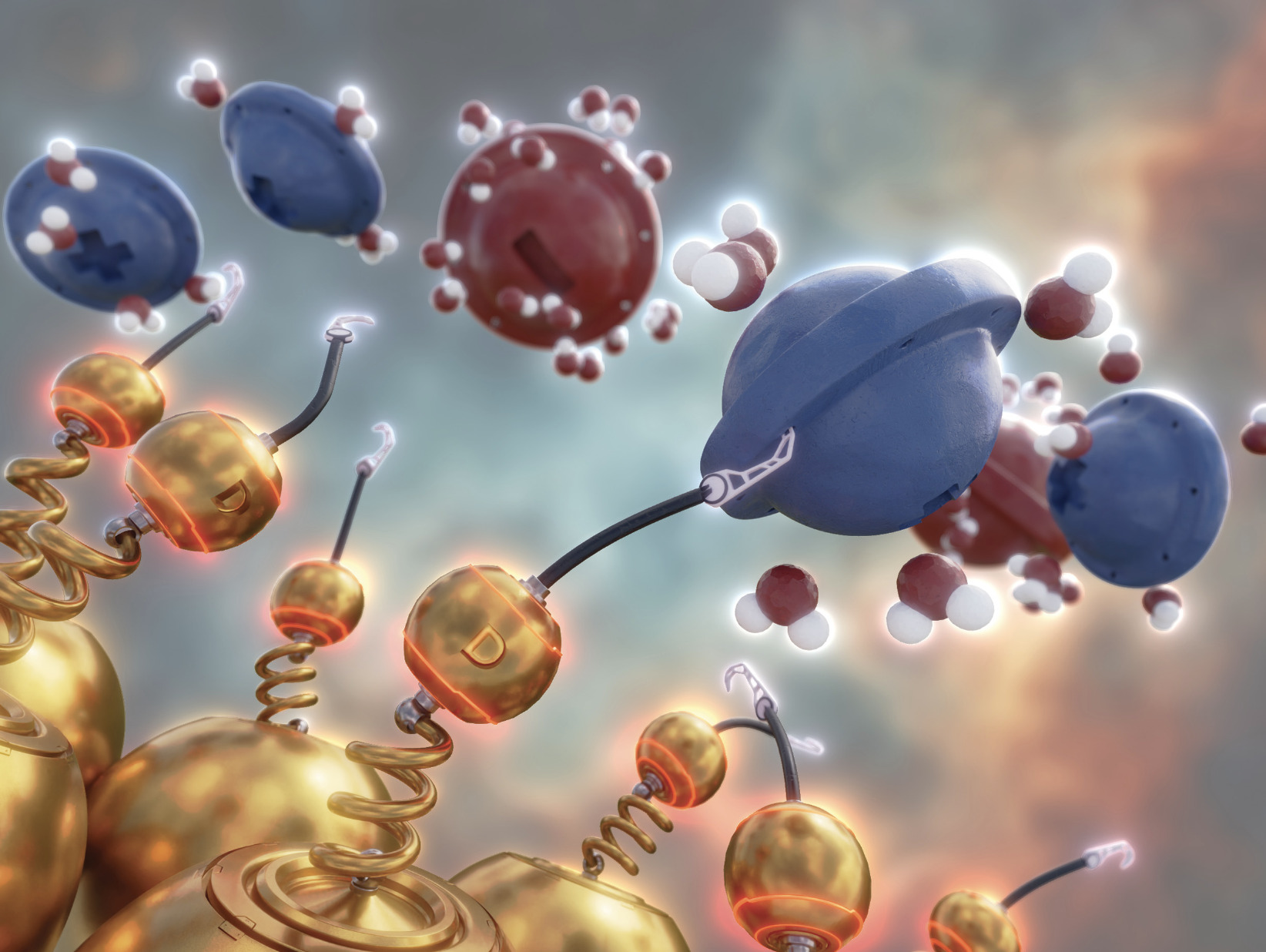Research activities
Liquid-solid interfaces are ubiquitous and responsible for a number of phenomena encountered in biological, chemical and physical processes. Surface-induced changes of material properties are not only important for the solid support but also for the liquid itself. Our research aims to understand structure, reactivity, spectroscopy and dynamics of interfaces (including solid/liquid and vapor/liquid interfaces) using a multiscale approach which includes ab initio and atomistic molecular dynamics simulations.
Enthusiastic scientists at the undergraduate, graduate, or postdoctoral level interested in multidisciplinary research are welcome to join our group.
The Pt/water interface

Electrified interfaces are crucial for electrocatalysis and corrosion, however their molecular morphology remains largely unknown. Using molecular dynamics simulations, also including electronic strcture we aim to provide a realistic picture of the electric double layer. Our recent work on Pt (111)-electrolyte interface in reducing conditions, revealed a deep interconnection among electrode coverage, wettability, capacitive response, and catalytic activity.
Revealing the Molecular Interplay of Coverage, Wettability, and Capacitive Response at the Pt(111)-Water Solution Interface under Bias (https://doi.org/10.21203/rs.3.rs-3788305/v1)
The nanoscale structure of the Pt-water double layer underbias revealed (https://doi.org/10.1016/j.electacta.2021.138875)
Metal interfaces including polarization

We introduced a simple approach to the molecular dynamics simulation of electrified interfaces which combines fixed charges and a core–shell model for the description of the polarisable electron density on the metal electrode. This has been applied to the Au surface in contact with a NaCl aqueous electrolyte solution and ionic liquids in order to calculate the differential capacitance and to gain a detailed picture of the charging mechanism.
Ntim and Sulpizi (Phys. Chem. Chem. Phys., 2023,25, 22619-22625)
Multiscale simulation of self-assembly of nucleotides

Modeling of minimal systems based on ATP-Zn coordination for chemically fueled self-assembly (E. Rossi, A. Ferrarini, M. Sulpizi Phys. Chem. Chem. Phys., 2023, 25, 6102-6111)
Vibrational spectroscopy and energy relaxation at interfaces

Structure, reactivity and dynamics are different from bulk. In collaboration with experimental groups simulations can help to rationalize the results from interfacial vibrational spectroscopy and to provide a molecular model of the interfaces. We contributed to method developments and applications for the calculations of sum frequency generation spectra (SFG) of water interfaces and time-resolved SFG to understand the impact of adding extra vibrational energy to liquid, using equilibrium and non-equilibrium molecular dynamics.
Lesnicki, Wank, Cyran, Backus, Sulpizi(Phys. Chem. Chem. Phys., 2022, 24, 13510-13513)
Lesnicki, Zhang, Bonn, Sulpizi, Backus (Angewandte Chemie 59 (31), 13116-13121)


